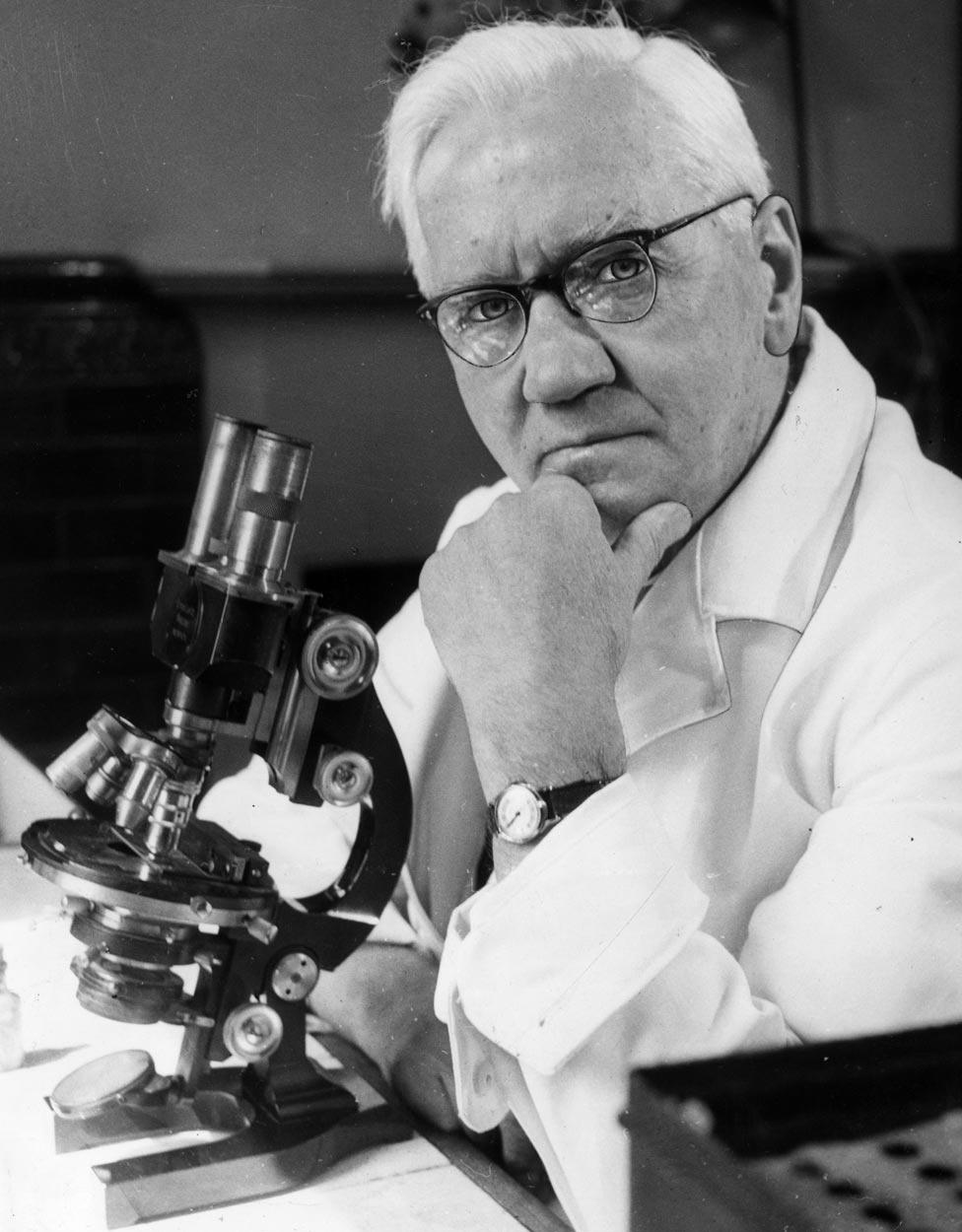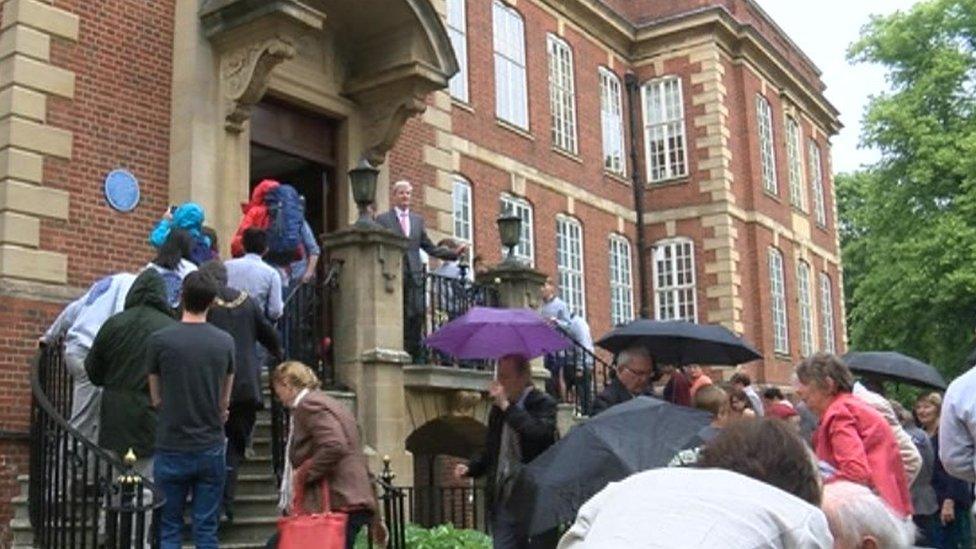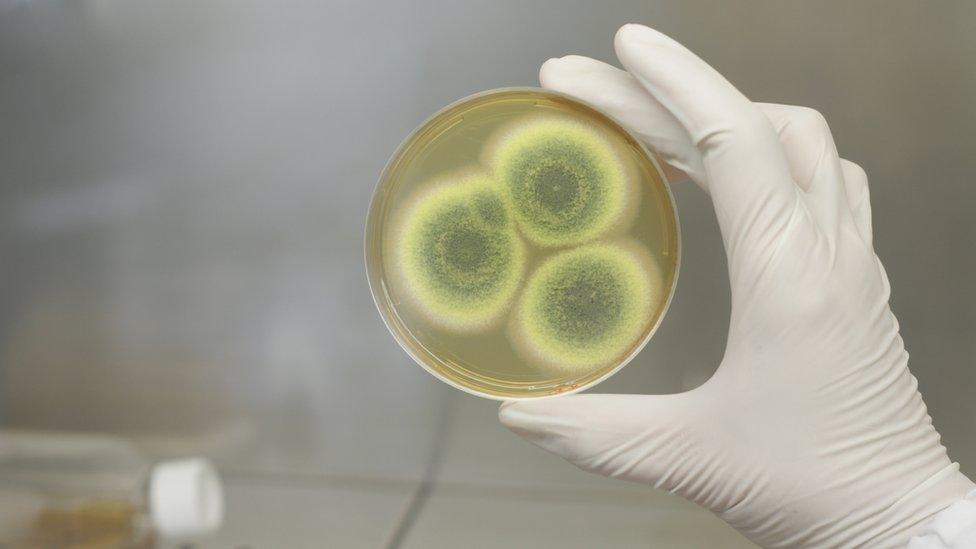Blue plaques in Oxford commemorate penicillin scientists
- Published

A plaque at the Dunn School commemorates the scientists' work
Blue plaques have been put up in Oxford to mark significant locations in the development of penicillin.
Sir Alexander Fleming discovered penicillin in 1928 at St Mary's Hospital in London, but scientists in Oxford developed it into a viable drug.
The plaques were unveiled at the Sir William Dunn School of Pathology and the Radcliffe Observatory Quarter.
Benny Chain, son of scientist Ernst Chain, said the installation of the plaques was "excellent".
The isolation and purification of penicillin to treat bacterial disease was mainly done by Howard Florey, Ernst Chain, and Norman Heatley, at the Dunn School from 1938 to 1941.

Sir Alexander Fleming was jointly awarded the Nobel Prize with two Oxford scientists
They later carried out clinical trials at the Radcliffe Infirmary.
The first patient was Albert Alexander, an Abingdon policeman. Though his condition improved there was not enough penicillin and he eventually died.
But in subsequent trials all patients treated ended up recovering.
By 1944 it was being mass produced in laboratories in the US, after the drug failed to get backing from any British pharmaceutical companies, and was used to treat soldiers wounded during World War Two.
Florey, Chain and Fleming were later awarded the Nobel Prize for Physiology or Medicine in 1945.
Benny Chain was present at the unveiling of the plaque at the Dunn School commemorating his father, who was a refugee from Nazi Germany.
He said: "In some ways it's late, in the sense it was nearly 70 years ago now, but it's excellent that the achievement has been recognised."
Speaking to a crowd of about 75 people, Prof Matthew Freeman described the scientific breakthrough within the building as "one of those very rare, genuinely epoch-changing events".
He added: "We don't know how many lives have been changed, but we reckon it might have been in the hundreds of millions."

A large crowd turned out to get a close look at the new plaque
- Published27 October 2017

- Published6 March 2017

- Published2 March 2017
